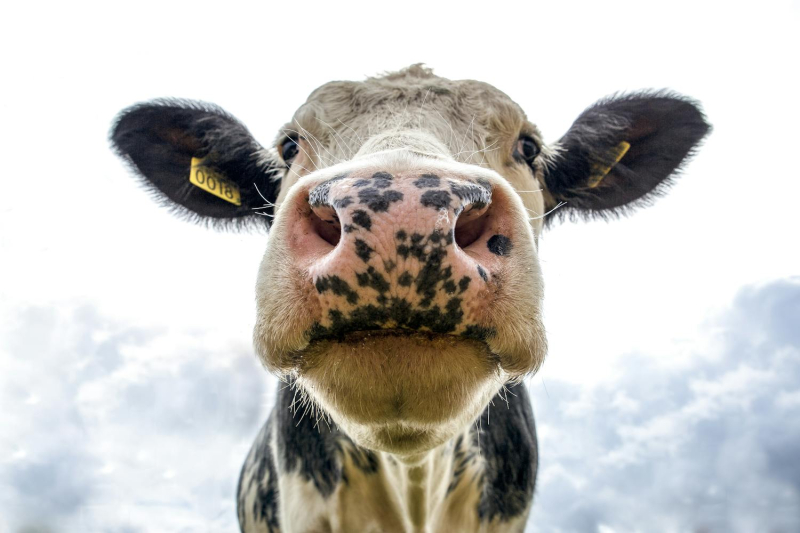
© Jan Koetsier/Pexels
The H5N1 virus, a subtype of the influenza A virus, is primarily known to affect birds. However, this one has just crossed a new frontierby infecting dairy cows in the United States. Its presence has been confirmed in 16 herds spread across six American states and a farm worker was also infected. The scientific community and public health authorities take this matter seriously and fear a possible extension of the threat to humans.
In an interview given to the media Futurity, two experts spoke out on the issue. Meghan Davis, associate professor in the Department of Environmental Health and Engineering, and Andrew Pekosz, professor in the Department of Molecular Microbiology and Immunology, both at Johns Hopkins University.
A worrying mutation
« This virus has been around for over 20 years. It has mutated over time, and something happened in recent years to cause an explosion of cases in wild birds» explains Meghan Davis. Indeed, the virus has proven that it is now capable of transmitting to certain mammals, including bears, skunks and foxes. Now it's dairy cows that are affected.
This progression in the virus's ability to adapt to new hosts is proof that it is mutating quite significantly and shows a certain resilience despite ongoing efforts to control and contain it. These mutations in the virus genome, having genetic material that can be composed of DNA or RNA. They are modifications of the sequence of this genetic material that can affect certain characteristics of the virus, including its ability to infect new hosts.
« < em>To date, no cases of infection of cattle with influenza A viruses, whether they affect humans or animals, have been reported. Each time this virus infects a new host, it causes great concern in the scientific community, which then seeks to understand what is happening ” explains Andrew Pekosz.
What about transmission to humans& ;nbsp;? Pekosz continues: “ I expect that in the coming weeks we will see more cases both in cattle and in humans, given the proximity between humans and cows during many dairy processes. Hopefully this doesn't turn into a big outbreak, but we'll definitely see an increase in cases ”.
Risks and repercussions for agriculture
The presence of the H5N1 virus is obviously worrying for the health of animals, but also for the safety of dairy products from farms. Even if the risk of finding traces of the virus in commercial dairy products is considered low, the presence of the virus in cattle remains a concern.
« I am surprised to discover this virus in dairy cows, because usually, when we use animal models to study influenza, we turn instead to mustelids, such as ferrets or mink» confides Pekosz. Thus, the further spread of this virus in such open environments as that of dairy farms, into which birds can easily enter, requires urgent re-evaluation sanitary measures.
What prevention strategies to adopt ?
The symptoms observed in contaminated cows are not specific. Reducing their appetite or milk production are, for the moment, not associated with a higher mortality rate. However, these remain serious enough to justify increased surveillance of the herds.
« Most of these cases tend to involve older cows, as adult cows who are lactating are at a different level of vulnerability than young calves» Davis notes. At this time, the United States Department of Agriculture has issued actions and recommendations for animal health officials, producers and veterinarians.
These measures include in particular the exclusion of cats and birds from areas livestock, as these can be potential vectors of H5N1. In addition to this, all workers in direct contact with livestock or risk areas are strongly encouraged to use personal protective equipment (PPE) in order to minimize their direct exposure to pathogens.
Other measures relating to biosecurityrecommend limiting non-essential livestock movements, regular disinfection of facilities, and specific procedures for handling and transporting potentially infected animals.
Even though the risk of transmission to humans is low, particularly for consumers of pasteurized milk, experts do not hide the fact that this expansion to an unusual host remains to be monitored. These risks are manageable, if good precautions are adopted and biosecurity measures reinforced. The situation still needs to be closely monitored in order to limit the spread of the virus as much as possible.
- The H5N1 virus has mutated, and is now present in 16 dairy herds in the United States.
- Even if the risk of transmission to humans through consumption of dairy products is quite low, it is necessary to adopt new precautions to limit the spread of the virus.
- These health measures include biosecurity measures, protecting dairy farms from cats and birds, and wearing protective equipment for farm workers.
📍 To not miss any Press news -citron, follow us on Google News and WhatsApp.
325.5 k reviews
[ ]
